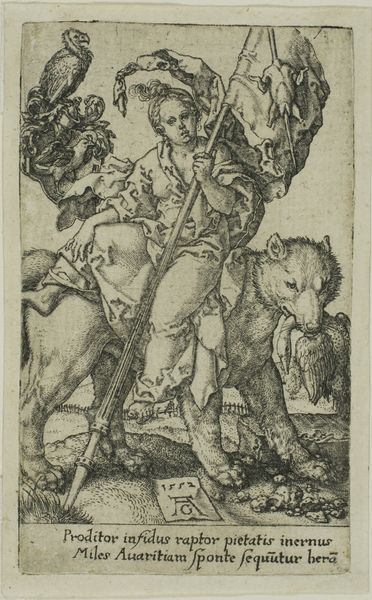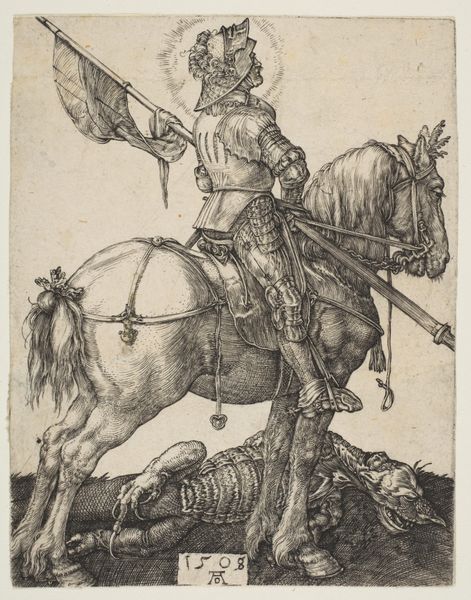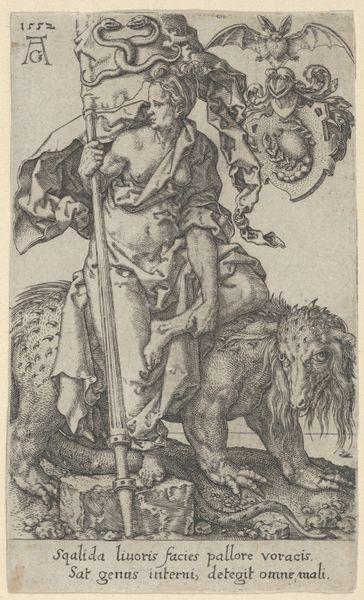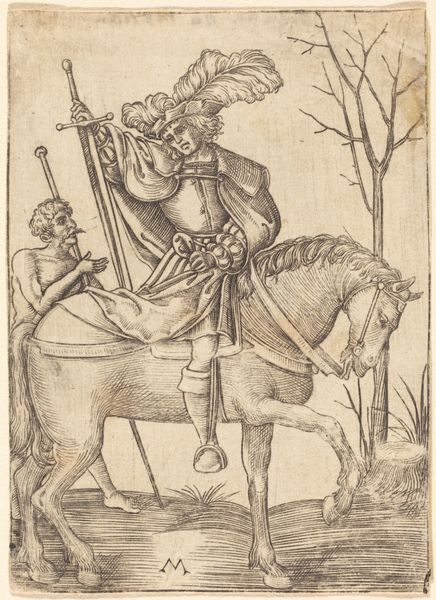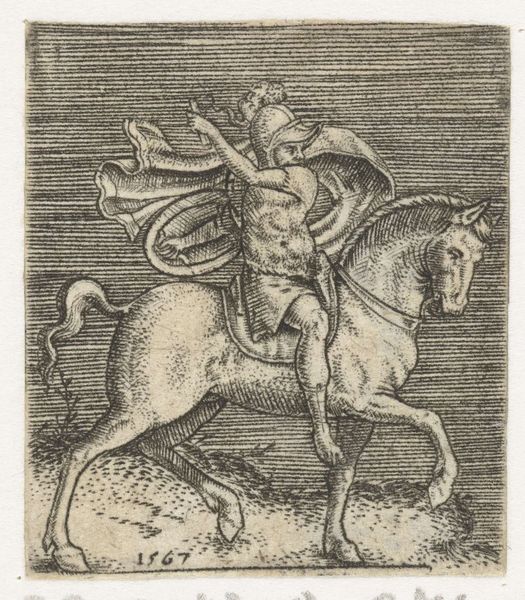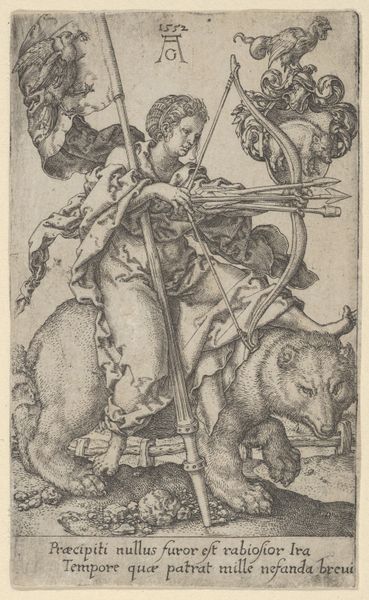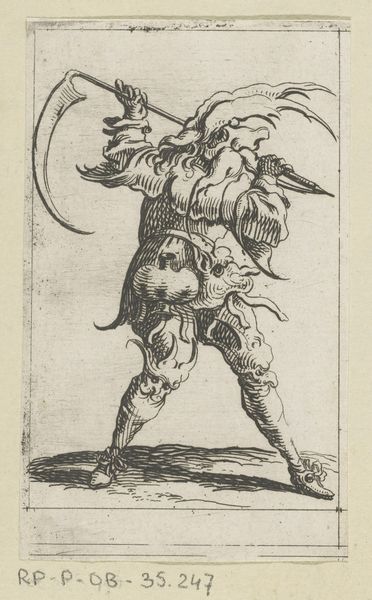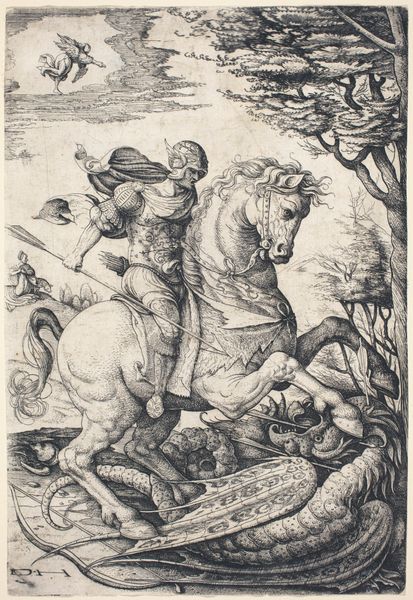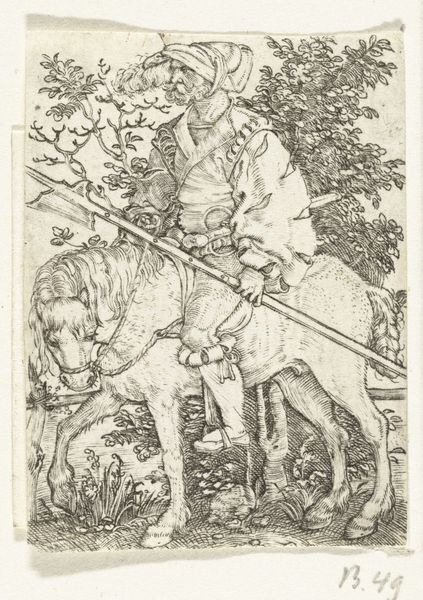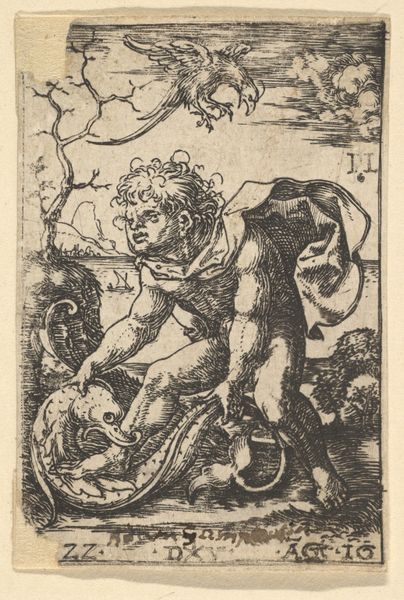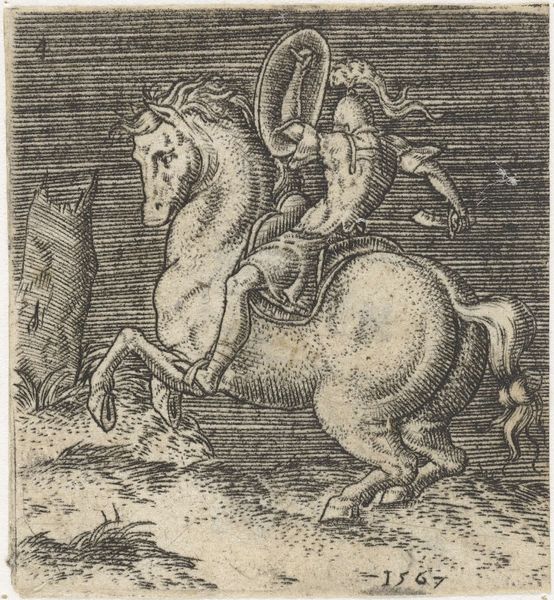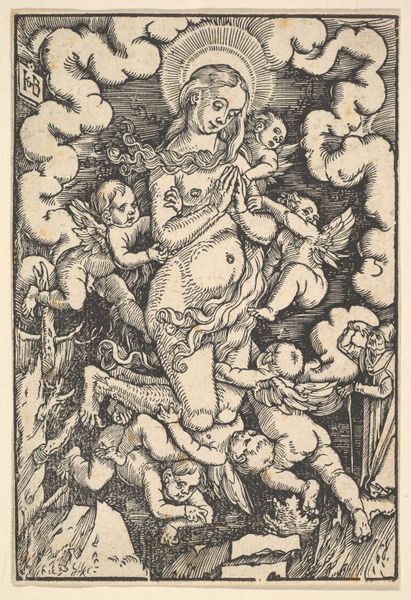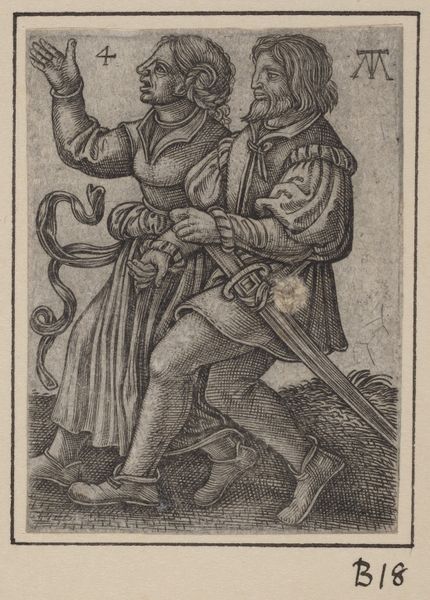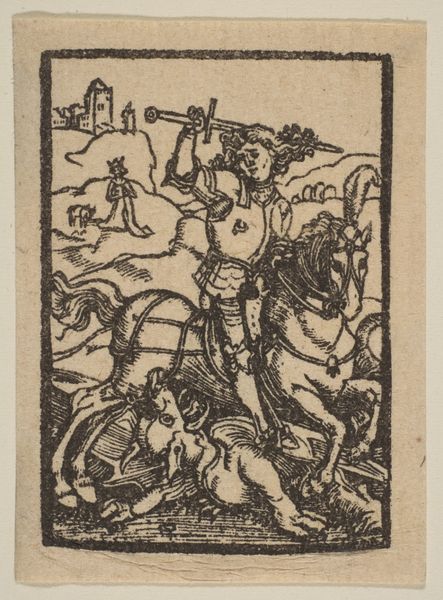
drawing, print, paper, engraving
#
drawing
#
medieval
#
allegory
# print
#
figuration
#
paper
#
11_renaissance
#
engraving
Dimensions: 103 × 62 mm (image/plate)
Copyright: Public Domain
Editor: We're looking at "Idleness, from the Vices," an engraving made in 1552 by Heinrich Aldegrever. The detail is incredible; you can practically feel the weight of the figure's robes. What strikes me is the contrast – a draped figure on a weary-looking donkey. How do you interpret this work? Curator: The image is indeed laden with symbols, drawing from a deep well of cultural anxieties and moral teachings of the Renaissance. Acedia, or spiritual sloth, isn't simply laziness; it represents a despair that stagnates the soul. Editor: A despair that stagnates the soul? Curator: Exactly. Observe how she's slumped, almost blending into the donkey, which itself symbolizes stubbornness and a lack of higher aspiration. The objects strewn about – broken tools, perhaps unfinished tasks - represent the fruits of inaction, a life unfulfilled. This wasn't merely a personal failing, but one that threatened the social fabric. Editor: So, it’s less about just being lazy and more about a kind of spiritual sickness? Curator: Precisely. The figure on the crest overhead picking his teeth suggests this idea of moral complacency or spiritual indolence, that such ennui becomes a kind of social contagion. Notice how Aldegrever positions these iconographic components in ways to convey that warning. Editor: I see now, it’s more than just what's depicted, but how the imagery serves as cultural shorthand. Thanks! Curator: My pleasure! And thinking about this in today’s context, how do you feel its symbolism may still have some effect today?
Comments
No comments
Be the first to comment and join the conversation on the ultimate creative platform.
